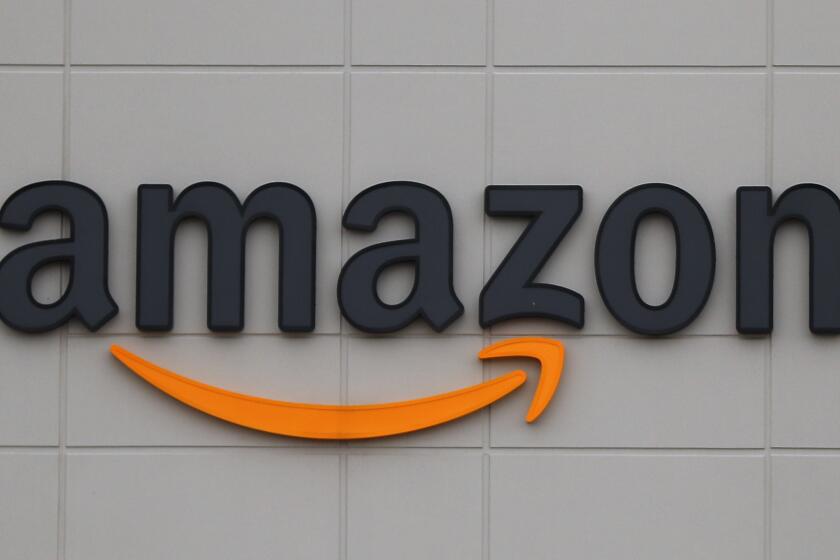U.S. hiring remains brisk as employers added 223,000 jobs in December

America’s employers added a solid 223,000 jobs in December, offering evidence that the economy remains healthy but portending possible further aggressive interest rate hikes by the Federal Reserve to slow growth and cool inflation.
The December job growth, though a decent gain, amounted to the lowest monthly increase in two years. The unemployment rate fell to 3.5%, matching a 53-year low, the Labor Department said Friday.
The monthly employment report offered other signs that the job market has begun to cool. Last month’s gains were fewer than half the 537,000 jobs that were added in July. And average hourly wage growth slowed sharply: It was up 4.6% in December from 12 months earlier, compared with a 4.8% year-over-year increase in November and a recent peak of 5.6% in March.
Slower paycheck growth will be a relief for Fed officials, who regard wage growth as a driver of future inflation.
Last month’s job growth capped a second consecutive year of robust hiring during which the U.S. regained all 22 million jobs it lost to the COVID-19 pandemic. Yet the rapid hiring and the hefty pay raises that accompanied it probably contributed to a spike in prices that catapulted inflation to its highest level in 40 years.
The picture for 2023 is much cloudier. Many economists foresee a recession in the second half of the year, a consequence of the Fed’s succession of sharp rate hikes. The central bank’s officials have projected that those increases will cause the unemployment rate to reach 4.6% by year’s end.
While banks and tech giants, including Amazon and Meta, are already cutting workers, many employers seem desperate to keep hiring.
Though the Fed’s higher rates have begun to cool inflation from its summertime peak, they have also made mortgages, car loans and other consumer and business borrowing more expensive.
For now at least, the job market is showing surprising resilience in the face of higher interest rates across the economy. Employers added 4.6 million jobs in 2022, on top of 6.7 million in 2021. All that hiring was part of a powerful rebound from the pandemic recession of 2020.
In June, year-over-year inflation reached 9.1%, the highest level in 40 years, before slowing to 7.1% in November. Last year, in an aggressive drive to reduce inflation back toward its 2% goal, the Fed raised its benchmark rate seven times.
Fed Chairman Jerome H. Powell has emphasized in recent remarks that consistently strong job growth, which can force employers to raise pay to find and keep workers, can perpetuate inflation: Companies often raise prices to pass on their higher labor costs to customers. And higher pay typically fuels more consumer spending, which can keep inflation elevated.
Residential customers of Southern California Gas Co. will see bills jump, the utility warns, because of sharply higher wholesale natural gas prices. Consumer advocates cry foul.
For that reason, Powell and other Fed officials have signaled their belief that, to get inflation under control, unemployment will have to rise from its current low level.
Fed officials have projected that they will raise their benchmark short-term rate to about 5.1% this year, the highest level in more than 15 years. If hiring and inflation remain strong, the Fed’s rate might have to move even higher.
Technology companies have been laying off workers for months, with some, including Amazon, saying that they had hired too many people during the pandemic. Amazon has boosted its layoffs to 18,000 from an earlier announcement of 10,000. Cloud software provider Salesforce says it will cut 10% of its workers. And Facebook’s parent company Meta says it will shed 11,000 jobs.
Smaller tech companies are also being hit. Stitch Fix, the fast fashion provider, said Thursday that it’s cutting 20% of its salaried workers. DoorDash has said it will eliminate 1,250 jobs.
Major oil companies were losing billions of dollars just three years ago as prices plummeted, Chevron Chief Executive Mike Wirth said.
Yet outside of high tech, smaller companies, in particular, are still hiring. According to the payroll processor ADP, companies with more than 500 employees cut jobs in December, while businesses below that threshold added many more workers. And an analysis by investment bank Jefferies showed that small companies were posting a historically high proportion of job openings.
The Fed is concerned about the fast pace of wage growth, which it sees as a reason why inflation is likely to remain high. Average hourly pay is rising at about a 5% pace, one of its highest levels in decades.
Economists think growth probably amounted to a solid annual rate of roughly 2.5% in the final three months of last year. But there are signs that it is slowing, and most analysts expect weaker growth in the current first quarter of 2023.
Consumers barely increased their spending in November, held down by modest holiday shopping. And manufacturing activity contracted in December for a second straight month, with new orders and production both shrinking.
And the housing market, an important economic bellwether, has taken a severe hit from the Fed’s rate hikes, which have more than doubled mortgage rates in the last year. Home sales have plummeted for the last 10 months.
More to Read
Inside the business of entertainment
The Wide Shot brings you news, analysis and insights on everything from streaming wars to production — and what it all means for the future.
You may occasionally receive promotional content from the Los Angeles Times.









